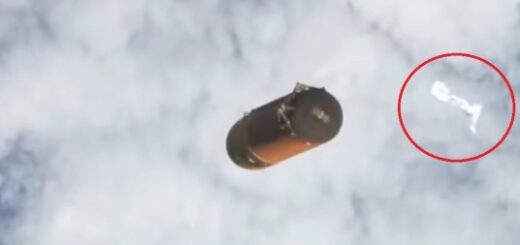China’s Zhurong Mars rover scopes out dunes on journey south

China’s Zhurong rover has quietly clocked up 1,900 feet (585 meters) of driving on Mars and has been using its science instruments to check out nearby geologic features in Utopia Planitia.
Zhurong’s latest exploits have seen it analyze dunes amid the local rocky Martian terrain and visit the backshell and parachute that helped the rover land safely on the Red Planet.
A new release by the China National Space Administration on July 23, also marking the first anniversary of the launch of China’s Tianwen-1 Mars mission, showed Zhurong had visited a second wind-formed sand dune.
Related: China’s Mars rover Zhurong just snapped an epic self-portrait on the Red Planet (photos)
Click here for more Space.com videos…
CLOSE
The rover used its surface composition detectors, multi-spectral cameras and other science payloads to analyze the formation, according to the update.
Zhurong landed on Mars in May and rolled onto the surface a week later, making China just the second country after the United States to land and operate a rover on Mars. The rover’s first feat was driving away from the lander, dropping a small, remote camera, and returning to pose with the lander for an epic selfie.
Later updates have included remarkable roving footage as well as sounds captured by the rover’s climate station.
The solar-powered rover has since been making its way south of the landing site. The CNSA released a map showing Zhurong’s travels up to July 21 and covering 66 Mars days, or sols. Both Zhurong’s parent orbiter, Tianwen-1, and NASA’s Mars Reconnaissance Orbiter have also been monitoring the journey.
A map of Zhurong’s travels on Mars through July 21, 2021.
A map of Zhurong’s travels on Mars through July 21, 2021. (Image credit: CNSA)
Tianwen-1 currently orbits Mars every 8 hours, in an orbit designed so the spacecraft passes over Zhurong once every Martian day, allowing the orbiter to relay data from the rover back to Earth. Tianwen-1 began circling the Red Planet in February, arriving just hours after the United Arab Emirates’ Hope orbiter and a week before NASA’s Perseverance rover reached Mars.
Zhurong has been operating on the surface for 68 Mars sols, or 69 Earth days. The rover’s primary mission is scheduled to last 90 sols, and China has not stated whether Zhurong will continue beyond this. However, China’s Yutu 2 rover on the far side of the moon has operated for more than 30 lunar days after landing in , despite a design lifetime of just three lunar days, or three Earth months.
Mars is currently about 235 million miles (378 million kilometers) away from Earth, meaning sending data or commands one way takes 21 minutes.



 Creators of mankind
Creators of mankind Description of “Tall white aliens”
Description of “Tall white aliens” Where they came from?
Where they came from? About hostile civilizations
About hostile civilizations The war for the Earth
The war for the Earth “Tall white aliens” about eternal life
“Tall white aliens” about eternal life Video: “Nordic aliens”
Video: “Nordic aliens” Aliens
Aliens Alien encounters
Alien encounters The aliens base
The aliens base UFO
UFO Technology UFO
Technology UFO Underground civilization
Underground civilization Ancient alien artifacts
Ancient alien artifacts Military and UFO
Military and UFO Mysteries and hypotheses
Mysteries and hypotheses Scientific facts
Scientific facts


















